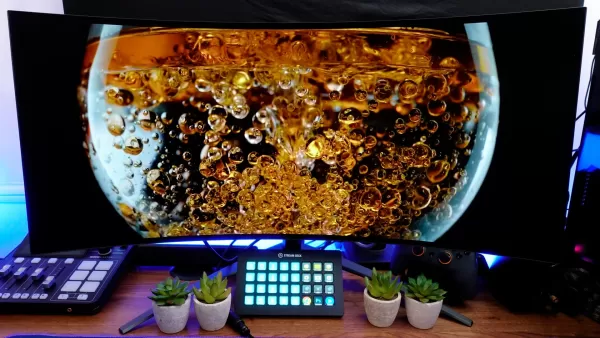Best OLED Display Types for Gaming Revealed
- By Gabriel
- May 20,2025
Purchasing my first OLED TV, the LG E8 55 inch back in 2019, right before lockdown, was a game-changer. It became the perfect companion for my isolation period. Initially, I had a basic understanding of OLED (organic light-emitting diode) technology, knowing it used self-lit pixels for infinite contrast, unlike the backlit LCD displays. But experiencing the vivid colors and deep blacks while playing Final Fantasy XV and The Last of Us Part II was like reliving a nostalgic dream in real-time. That experience fueled my passion, leading me to upgrade to the LG C2 65-inch TV a few years later. Since then, I've delved deep into the world of OLED displays, learning that not all OLEDs are created equal, and they don't even use the same underlying technologies. Curious about the types of OLED? While there are many, the three you should focus on are WOLED, QD-OLED, and AMOLED.
 WOLED, QD-OLED, and AMOLED: How They Work
WOLED, QD-OLED, and AMOLED: How They Work
OLED technology has been around for decades, with companies like Kodak and Mitsubishi exploring different iterations. It was LG's introduction of OLED TVs in the early 2010s that brought this technology into the mainstream.
LG's version of OLED, known as WOLED (White OLED), is marketed simply as OLED because LG positions itself as the leader in this space. WOLED uses a white OLED layer with an RGBW color filter to mitigate the issue of burn-in, which is accelerated by the different deterioration rates of red, green, and blue emitters. However, this approach can lead to uneven brightness and reduced color volume due to the filtering process. Higher-end WOLED models address this with Micro Lens Array technology, which enhances light focus.
In 2022, Samsung introduced QD-OLED (Quantum Dot OLED), which replaces the white OLED layer with a blue one that interacts with quantum dot color convertors. This method absorbs light and converts it into red or green without losing backlight, offering improved brightness and color volume.
AMOLED, on the other hand, stands in its own category. It's similar to WOLED but includes a thin-film transistor (TFT) layer that controls pixel charge, allowing for faster pixel activation. This comes at the expense of the "infinite" contrast that OLED is known for.
 WOLED, QD-OLED, and AMOLED: Which Is Better for Gaming?
WOLED, QD-OLED, and AMOLED: Which Is Better for Gaming?
Choosing the right OLED technology for gaming depends on your specific needs and preferences. Generally, QD-OLED is considered the best for gaming, but there are scenarios where WOLED or AMOLED might be preferable.
AMOLED displays are commonly found in smartphones and laptops due to their flexibility, high refresh rates, and excellent viewing angles. They are less suitable for TVs due to cost and are not ideal in direct sunlight because of lower peak brightness.
For gaming monitors and TVs, you can choose between WOLED and QD-OLED. WOLED, often simply marketed as OLED, offers exceptional brightness for whites thanks to its white OLED layer. However, color brightness can suffer due to the RGBW filter. QD-OLED, on the other hand, provides overall brighter visuals and more vibrant colors because its quantum dots absorb and convert light efficiently.
In environments with significant glare, WOLED might be less distracting as it maintains true blacks. In contrast, QD-OLED can show a purplish tint in bright conditions due to the absence of a polarizing layer, which is removed to boost brightness. Ultimately, the choice between WOLED and QD-OLED often comes down to the specific display's specs and your budget.
The Future of OLED Is PHOLED
The OLED landscape includes various technologies, one of which is PHOLED (Phosphorescent OLED). PHOLED uses phosphorescent materials to convert energy to light, offering 100% luminous efficiency compared to the 25% of fluorescent materials. However, the challenge with PHOLED has been the short lifespan of its blue component.
Recently, LG announced a breakthrough in blue PHOLED technology, paving the way for mass production. Dubbed "Dream OLED" by LG, this technology promises brighter displays with lower power consumption. While we won't see PHOLED in TVs immediately, it's expected to appear in smartphones and tablets soon.
Latest News
more >-

-

- Red Dead 2, GTA 5 Sales Stay Strong
- Dec 21,2025
-

-
-




